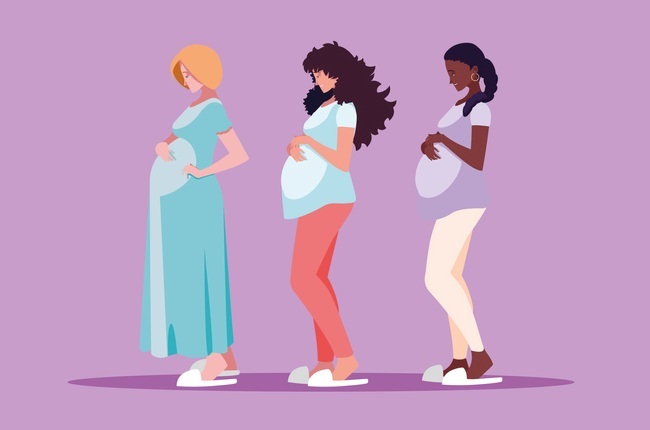
- Diabetes is a serious global health issue, with more than 640 million people expected to live with the condition by 2030.
- Type 2 diabetes used to be a disease of older people, but it now also affects children and adolescents.
- In SA, it is the leading cause of death in women - women of childbearing age, in particular, are at an increased risk.
Observed annually on 14 November, World Diabetes Day serves as a reminder that diabetes is a serious global health issue and a significant societal burden that must be addressed urgently. The International Diabetes Federation (IDF) points out that 537 million adults worldwide were living with diabetes in 2021. This number could rise to 643 million by 2030 and 783 million by 2045.
Of concern is the increase in the global prevalence of obesity which predisposes people to type 2 diabetes, the most common type of diabetes. Whereas in the past, type 2 diabetes used to be a disease of older people, it now also affects children and adolescents. It remains undiagnosed in many African countries, with two-thirds of people living with diabetes unaware that they have the disease.
In South Africa, it is the leading cause of death in women. Women of childbearing age, in particular, are at increased risk for type 2 diabetes because they are disproportionally affected by obesity. Unless they are pregnant, they do not always have access to screening for the disease.
READ MORE | 'I was diagnosed with diabetes despite living a relatively healthy life'
With increased focus on improving antenatal care in the country, women often gain access to screening for non-communicable diseases for the first-time during pregnancy. Screening practices and diagnostic criteria for gestational diabetes mellitus (GDM) – when hormones in the placenta increase the mother’s insulin resistance – differ in geographical areas in South Africa, and hyperglycemia (high blood sugar) is often first detected in pregnancy. This leads to the erroneous diagnosis of GDM instead of Type 2 diabetes.
Despite limited access to screening and potential underreporting, most live births affected by hyperglycemia in pregnancy occur in low- and middle-income countries. According to the IDF, one in six live births in Africa are affected by hyperglycemia in pregnancy.
Studies from South Africa estimate that one in four pregnant women have hyperglycemia in pregnancy, and a quarter of these have type 2 diabetes. Together, type 2 diabetes and GDM can have an impact on the health of the mother and fetus during pregnancy. After pregnancy, they can increase the child's risk of cardiovascular diseases, obesity and type 2 diabetes as early as during school-going years.
READ MORE | 'It can happen to anyone': Everything you need to know about Gestational Diabetes
Conventional screening and testing remain suboptimal and cumbersome, prompting researchers to search for biomarkers that can help simplify GDM screening and make it a reality for all pregnant women, especially for those in low- and middle-income countries where perinatal risks are far greater due to concomitant communicable diseases, late presentation and other resource limitations.
Pre-existing diabetes can cause congenital abnormalities if glucose levels are not controlled. Additionally, all forms of diabetes can lead to catastrophic complications, including hyperglycemic coma (losing consciousness due to high blood glucose and developing a life-threatening emergency when blood sugar goes too high). Other complications include preterm birth, stillbirth, and birth trauma, primarily due to increased birth weight.
Most studies investigating the underlying causes of GDM have been performed in West African and European women, with South African women grossly under-represented. Despite the upsurge in type 2 diabetes and GDM, it is important to note that other types of diabetes, e.g., type 1 diabetes (when the pancreas does not produce enough insulin), monogenic diabetes (a rare type of diabetes caused by a mutation in a single gene), and diabetes due to steroids or transplantation, can arise or overlap with pregnancy. Pregnancies complicated by type 1 diabetes have increased by as much as 44% in the last 15 years.
READ MORE | Technology and home visits can help South Africans with diabetes cope with insulin
This type of diabetes characteristically occurs in young, thin individuals, but with the rise in obesity rates, it increasingly occurs in overweight individuals. Hyperglycemia in obese or overweight people is often assumed to be type 2 diabetes, but it is estimated that 10% have type 1 diabetes. A clearer understanding and improved knowledge of these factors and their relative contributions to the development of GDM may lead to more precise management strategies, including new preventative and therapeutic approaches.
Limited resources and a high patient burden have hampered opportunities to implement accessible preventative care in our public health system for women who are at an increased risk of developing type 2 diabetes and GDM. All women diagnosed with high blood glucose, including those with true GDM, should be tracked, and their glucose levels should be assessed after they have given birth. Interpregnancy care, i.e. the care provided to women of childbearing age who are between pregnancies, is advantageous and may achieve prolonged benefits with early intervention.
The problem is, however, that women around the world often do not return for their own 4-12-week glucose check-up. In South Africa, the return rate is 30%. This could be because of financial reasons, prioritising the care of the baby, or the perception that GDM resolves, etc. As adverse events are preventable in women with GDM, all pregnant women should have the opportunity for testing and to be included in targeted intervention programmes — ideally before they become pregnant.
*Ankia Coetzee and Magda Conradie are endocrinologists affiliated with the Division of Endocrinology at the Faculty of Medicine and Health Sciences (FMHS) at Stellenbosch University (SU). David Hall is affiliated with the Department of Obstetrics and Gynecology at the FMHS at SU. This article is based, in part, on their academic paper ‘Hyperglycemia First Detected in Pregnancy in South Africa: Facts, Gaps, and Opportunities’ published recently in Frontiers in Clinical Diabetes and Healthcare.




 Publications
Publications
 Partners
Partners











